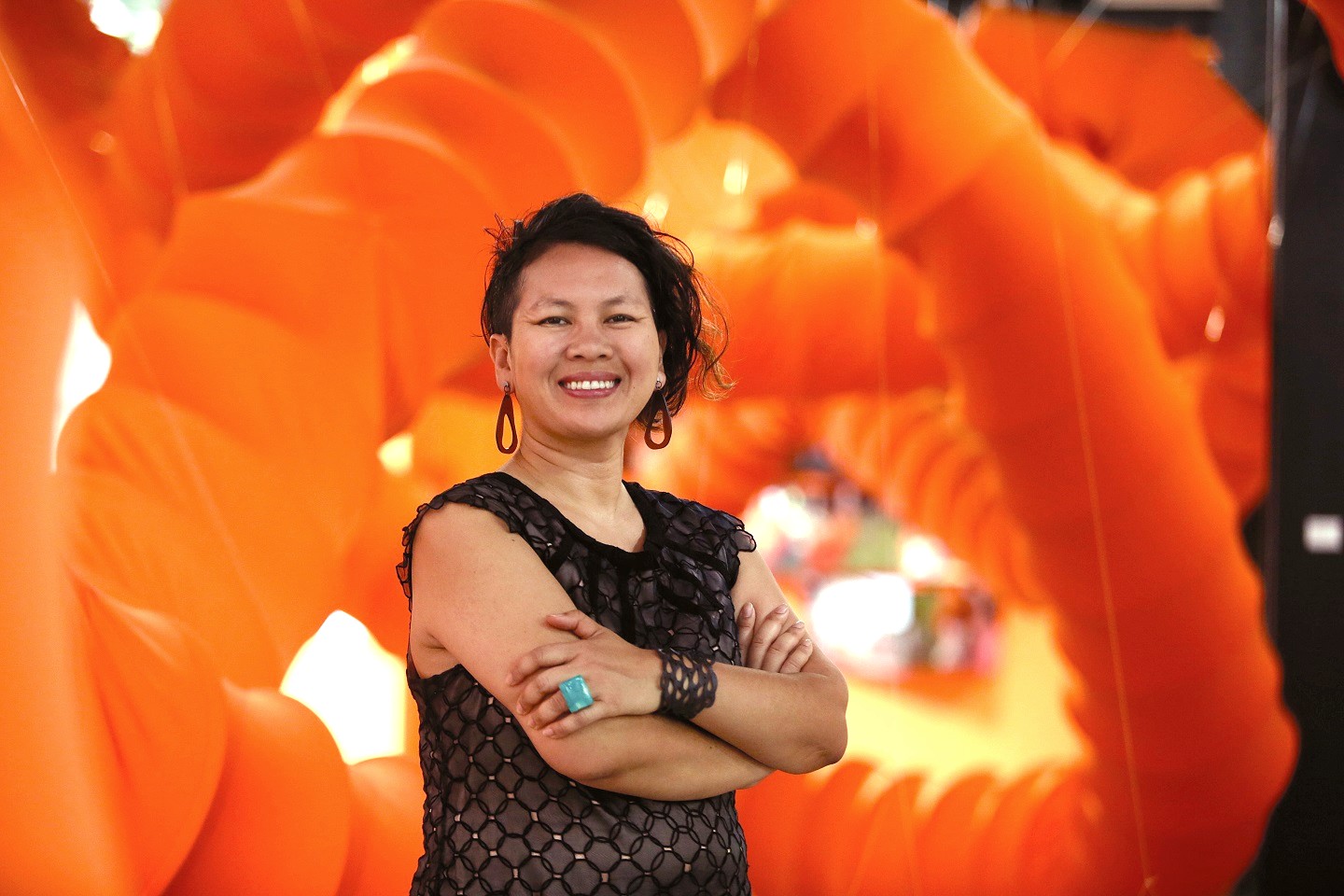Anida Yoeu Ali exhibits artwork in 4 different countries

IAS faculty member Anida Yoeu Ali exhibited her artworks in four different countries. Ali is an internationally recognized artist whose works span performance, installation, video, images, public encounters, and political agitation. This past November Ali’s works were on view concurrently at the Jogja National Museum (Indonesia), Stedelijk Museum Schiedam (The Netherlands), Gajah Gallery (Singapore) and the Kunsthall Trondheim (Norway).
Ali’s “Enter” series, originally performed in the rice fields of Cambodia, was selected for the Biennale Jogja XV hosted at the Jogja National Museum in Yogyakarta, Indonesia. The performance documentation from the “Enter” series was exhibited as both a large size wall mural and on a video monitor, both on view from Oct 20-Nov 30, 2019. On view in Singapore at Gajah Gallery from Nov 23, 2019 – Jan 5, 2020, Ali exhibited her “White Mother” photographic series as part of the group show “Shaping Geographies: Art | Woman | Southeast Asia.” Showcasing works by leading contemporary women artists from Southeast Asia, the exhibition brings together a diverse set of art practices, highlighting the individual artistic responses to the conjunction of three key communal axes: Art, Woman and Southeast Asian. On view since Sept 21, 2019 at the Stedelijk Museum Schiedam is a large scale 2-channel video projection of “Into the Night” from her Buddhist Bug series. The work is currently on view as part of a larger group show titled “Modest Fashion” until Feb 9, 2020. Finally, on view from Nov 30, 2019 until Feb 16, 2020 at Kunsthall Trondheim is a series of photographic prints from The Buddhist Bug series. The prints are part of a touring group show titled “A Beast, A God and A Line” originally curated by Hong Kong based curator Cosmin Costinas.
In his curatorial statement, Costinas states, “The artists in the exhibition investigate traces of colonial domination, as well as the different ramifications of that hegemony today, when cultural and environmental genocides continue to unravel landscapes, communities, and worlds, particularly among the most marginalized indigenous groups. Many of the artists in A beast, a god, and a line are among the most powerful voices who are today reinventing the significance of matter, objects, and forms, their genealogies and deep significance.”
